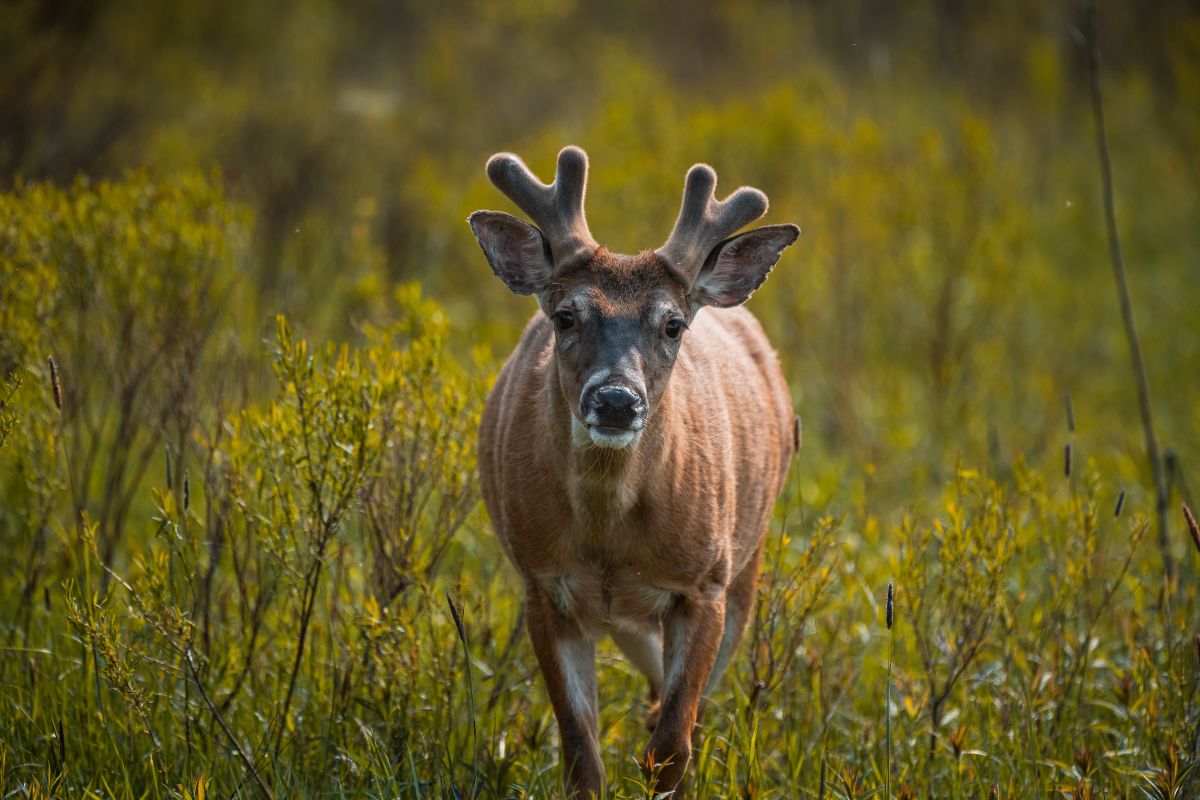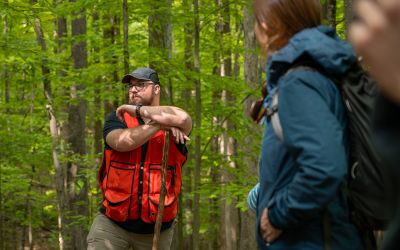Managing Your Woodlands For Deer

A white tail deer walks across a field in West Virginia towards the camera. In late spring, the deer are already starting to grow antlers for the rut. ©Stephen Taglieri
There are many reasons to want to attract white-tailed deer to your property. Having healthy wildlife on your property promotes a healthy ecosystem. And for many, being able to see wildlife on their property is a point of pride. During the autumn months, anyone from hunters to wildlife photographers can manage their woodlands for deer. There are many ways to do so, and today we’re sharing some of the tips and tricks given to us by our 2010 National Outstanding Tree Farmer of the Year, Salem Saloom.
Saloom has been hunting his Conecuh County, Alabama property since 1983, primarily for wild turkeys and white-tailed deer. “We enjoy trying to make this property better every year through good management. Hunting is a big part of that.” says Saloom.
Saloom Properties hosts a small hunting club and funnels the income raised through its hunting lease back into property. Saloom is working to restore the longleaf pine forest ecosystem and improve wildlife habitat for deer, turkey, bobwhite quail and the threatened gopher tortoise, among other conservation efforts.
“It’s the hunters who are practicing the really good stewardship. It’s the hunters who want to improve their plot of land and their forest.”
When it comes to creating an ideal habitat for white-tailed deer, the three factors you have the most control over are food, cover and water. Use the strategies listed below to make your woodland a more attractive place for deer to call home.
1. FOOD
The first thing many landowners do to attract deer is to plant food pots and establish feeders. While these can be part of a successful management strategy, they are relatively expensive and intensive tools. Instead, consider managing for natural vegetation that attract deer, rather than sacrificing time, money and productive acreage to food plots and feeders.
The following natural vegetation management activities can help to meet the needs of white-tailed deer:
Discing
Disturbing the soil through shallow tillage (also known as “discing”) stimulates the growth of native grasses and forbs, and the resprouting of many woody species. It also helps control brush.
Mowing
Mowing should go hand-in-hand with discing. Concentrate on edge roads, fire breaks and old fields to remove old-growth grasses and disperse seeds.
Thinning
Work with your forester or FFCP community manager to identify areas on your property to select harvest. By reducing tree density in specific areas of the woods, you can greatly increase the availability of browsable vegetation by allowing sunlight to reach the forest floor. It also allows the trees you leave behind to grow better. Concentrate on removing undesirable tree species to allow desirable, native deer browse such as blackberry, poison ivy, grape and young oak species to take hold.
Creating Openings
Your forest should have openings to allow younger growth to sprout. A forest with a wide age range of trees is most healthy. Having older trees alongside clearings that promote younger growth will attract many different animal species. You can create these clearings by select-harvesting areas on your property.
Managing for Mast
Removing undesirable trees, while cultivating and planting mast-producing trees can all help nourish and attract wildlife. Ideally, 20 to 30 percent of your woodland should consist of these fruit- and nut-bearing trees. Deer love acorns, especially from white oaks, beech, chestnut and hickory. Soft mast from persimmon, crabapple, honey locusts, sumacs as well as domestic apple and pear trees will also attract deer.
2. Water
Deer gain much of the water they need to survive from the foods they consume, but they will also drink free water from ponds, creeks, rivers and springs.
3. Cover
Cover protects deer from predators and the elements while they’re bedding, feeding, loafing or travelling. Generally, white-tailed deer prefer wooded areas intermixed with openings. Areas without woody vegetation are not ideal, nor are wooded areas completely covered with timber.
If you’re interested in connecting with forestry professionals to create a forest management plan that aligns with your goals, then look into the Family Forest Carbon Program today. We’ll cover the cost of forestry consultations and guarantee annual payments to landowners while assisting the stewardship of your woods. Click here to learn more.
Related Articles

October 6, 2023
Managing Invasive Plant Species in the Northeast
60-70% of Vermont, New York and Massachusetts consist of woodlands, and this thriving ecosystem can be jeopardized when invasive plant species outcompete native species.

August 29, 2023
Why Work With a Forester
Forests are complex and the number of things you'll need to consider as a landowner can be overwhelming. Many landowners have foresters put together a comprehensive management plan.

August 22, 2023
Bees: Their Amazing World, and Their Role in our Forests
Honey bees. In this post we’ll look at the role bees play in forest health, and how you can protect bee habitat on your land.